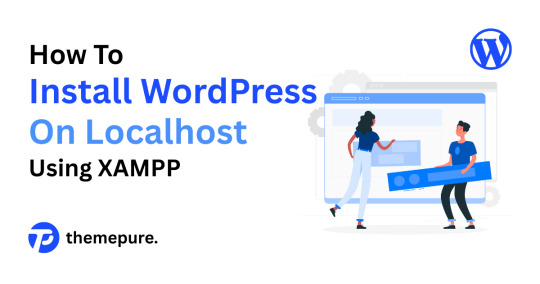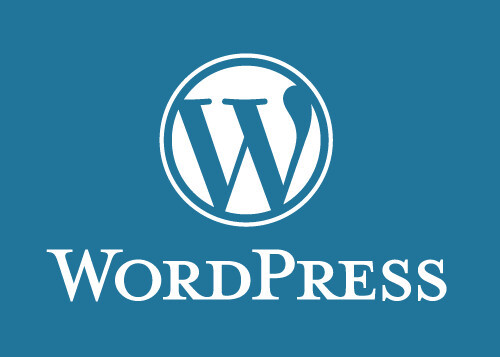#wordpress directory theme
Explore tagged Tumblr posts
Text
Recipe WordPress Theme for Food Bloggers & Chefs
Introduction
Sharing your love for food online has never been easier. The Recipe - Recipe WordPress Theme gives food bloggers, chefs, and cooking enthusiasts the tools to present recipes beautifully.
Benefits
This theme makes it simple to organize recipes, showcase food photos, and keep visitors engaged with your culinary creations.
Features
Clean, modern layout designed for food blogs and recipe sites
Fully responsive and mobile-friendly
SEO-ready to help your site rank in search engines
Sections for categories, featured recipes, and blogs
Easy customization to match your style
If you're ready to share your recipes online, the Recipe WordPress Theme is a great place to start.
Final Thought
With its clean layout and recipe-friendly structure, this theme is perfect for food lovers who want to inspire others.
FAQs
1. Can I use this theme for video recipes? Yes, it's easy to add videos alongside your written content.
2. Is it beginner-friendly? Absolutely. No coding skills required.
3. Does it work on smartphones? Yes, your recipes will look great on all devices.
#recipe WordPress theme#cooking recipe WordPress template#food recipe WordPress theme#recipe blog WordPress theme#recipe sharing WordPress theme#cooking blog WordPress theme#recipe website WordPress template#chef recipe WordPress theme#recipe book WordPress theme#easy recipe WordPress theme#responsive recipe WordPress theme#personal recipe WordPress theme#recipe collection WordPress theme#recipe directory WordPress theme#recipe portfolio WordPress theme#home cooking WordPress theme#recipe app WordPress theme#kitchen recipe WordPress template#custom recipe WordPress theme#recipe design WordPress theme
0 notes
Text
How to Be Successful in WordPress Powered Directory Business?

Are you ready to turn your passion for niche communities into a thriving online business? Operating a WordPress-powered directory can be both lucrative and rewarding, but success in this competitive space requires a strategic approach.
Whether you’re looking to create a directory for local businesses, niche interests, or professional services, understanding the key principles of effective management and growth is essential. By harnessing the power of WordPress and implementing smart business practices, you can position yourself as a leader in your chosen market.
In this article, we’ll explore the fundamental strategies that will help you navigate the complexities of running a successful directory business on WordPress, empowering you to achieve your entrepreneurial ambitions while making a meaningful impact within your community.
Read Full Article >>
0 notes
Text
Best Directory Site WordPress Theme: Boost Your Online Presence

In the ever-expanding digital landscape, creating an effective online directory website is a smart choice for businesses and individuals looking to connect people with the services and resources they need. To make your directory site stand out and function seamlessly, choosing the right WordPress theme is crucial. In this article, we'll dive into the world of directory site themes for WordPress and help you discover the best options available.
Why a Directory Site WordPress Theme Matters
The Power of First Impressions
Your website's design is the first thing visitors notice. A well-crafted directory theme not only grabs their attention but also ensures easy navigation. A cluttered or outdated design can drive potential users away.
User-Friendly Experience
A directory site should be user-friendly, allowing visitors to search for listings, filter results, and access information effortlessly. A theme with intuitive features is essential.
Get Any Directory Site WordPress Theme for Free
SEO-Friendly Structure
Search engine optimization (SEO) is key to your directory site's success. An SEO-friendly theme ensures your site ranks higher in search engine results, increasing its visibility.
The Top Directory Site WordPress Themes
1. DirectoryEngine
DirectoryEngine is a premium WordPress theme tailored for directory websites. It offers a clean and modern design, advanced search options, and user-friendly submission forms. With its robust features, it's suitable for various directory niches.
2. ListingPro
ListingPro is another top-tier theme designed for directories. It includes features like built-in monetization options, user reviews, and advanced search filters. It's a great choice for those looking to create a profitable directory site.
3. MyListing
MyListing is a versatile WordPress theme with a focus on customization. It allows you to create unique directory websites with personalized listing templates and a range of useful plugins.
4. Listify
Listify stands out with its elegant and responsive design. It offers integration with popular plugins like WooCommerce and WP Job Manager, making it a great choice for directory sites with e-commerce functionality.
5. DirectoryPress
DirectoryPress is a budget-friendly option for those starting a directory site on a tight budget. It comes with essential features for building a directory website and is easy to set up.
Choosing the Right Theme for You
1. Define Your Goals
Before selecting a theme, identify the purpose of your directory site. Determine if it's for a local business directory, job listings, real estate, or any other niche.
2. Budget Considerations
Consider your budget when choosing a theme. Premium themes offer more features, but there are also quality free options available.
3. Customization Options
Evaluate the customization options each theme provides. The ability to personalize your site is crucial to make it unique and appealing.
4. SEO Features
Look for themes that prioritize SEO. Features like schema markup and fast loading times are vital for better search engine rankings.
5. User Support and Updates
Check if the theme developer offers regular updates and excellent customer support. A reliable theme developer ensures your site stays secure and up-to-date.
Conclusion
Selecting the best directory site WordPress theme is a crucial step in building a successful online directory. Each of the themes mentioned above has its unique strengths, so assess your specific needs and budget before making a decision.
Enhance your online presence and connect users with the resources they need by choosing the right directory theme for your WordPress website.
FAQs (Frequently Asked Questions)
1. What is the advantage of using a directory site WordPress theme?
A directory site WordPress theme simplifies the process of creating a functional and visually appealing directory website, saving you time and effort.
2. Are free directory themes as good as premium ones?
Premium directory themes often offer more features and support, but free themes can still be effective for basic directory websites with limited budgets.
3. How can I optimize my directory site for SEO?
To optimize your directory site for SEO, focus on keyword research, high-quality content, mobile-friendliness, and fast loading times.
4. Can I monetize my directory website?
Yes, many directory themes come with built-in monetization options, allowing you to earn revenue through featured listings, ads, and premium memberships.
5. Do I need coding skills to customize my directory theme?
While coding skills can be helpful, many directory themes offer user-friendly customization options through a visual interface, making it accessible to users with no coding experience.
Get Any Directory Site WordPress Theme for Free
0 notes
Text
Put Your Eyes on BLINK TWICE (2024) [Movie Review]
Blink Twice is a solid directorial debut from Zoe Kravitz, exuding a sense of confident storytelling with a fantastic cast and an uncompromising and often vicious story. Minor tonal and pacing issues don’t throw off what works.
Blink Twice; 2024; written by Zoe Kravitz & E.T. Feigenbaum; directed by Zoe Kravitz; Starring Naomi Ackie, Channing Tatum; Alia Shawkat, Geena Davis, and Christian Slater; Rated R; 1h42m; Amazon; Theatrically released Aug 22nd. Blink Twice opens with a card informing the audience the film that will follow has themes of gaslighting, abuses of power, and other heavy issues. My wife and I looked…

View On WordPress
#blink twice#channing tatum#horror#Horror Movies#horror review#movie review#movies#review#zoe kravitz
2 notes
·
View notes
Text
Monkey Man
With Monkey Man being his first directorial debut, Dev Patel (who also stars in the movie) did a great job. The movie follows Kid (played by Dev) and his desire to avenge his mother’s death. Using the mythological story of Hanuman, and themes of religion, politics and transgender issues, Dev combines all of this to make the story ever more powerful and profound. Monkey Man is an action movie,…

View On WordPress
3 notes
·
View notes
Text
THE DEMON DISORDER Aussie supernatural horror will premiere soon
‘There is no cure’ The Demon Disorder is a 2024 Australian horror film about an unearthed family secret that leads to revenge from beyond the grave. The supernatural-themed movie was directed and co-produced by special effects expert Steven Boyle (Fear Below; The Matrix Revolutions; The Possessed; Boar; The Pack; Daybreakers) – making his feature directorial debut – from a screenplay co-written…

View On WordPress
#2024#Amy Ingram#Australian#Charles Cottier#Christian Willis#Dirk Hunter#John Noble#Liam Wallace#movie film#Steven Boyle#supernatural horror#The Demon Disorder#Tobie Websters
3 notes
·
View notes
Text
It got worse!
After his own employees once again tried to nicely tell him to please sit down and shut up, Matt instead shut down WordPress new account / new plugin / new theme and photo directory services for like two weeks after this shitbaby tantrum, and posted this whiny asswipe note about it.
People beyond WordPress and tumblr are thinking maybe this is bad (ya THINK????)
13K notes
·
View notes
Text
The Ultimate WordPress Security Checklist for Pre-Launch

Launching a WordPress website can be thrilling, you are getting your ideas out into the world. Before you click that "Publish" button, though, there is something potentially much more important to consider: security.
Every year, thousands of WordPress sites are compromised due to minor lapses in judgment weak passwords, neglected plugins, or simply failing to check off a security checklist downstream. However, when your site can be tied to your business, your reputation, and your customers' trust, the repercussions of ignoring security can be staggering.
Here is a real-world, human-focused checklist to ensure that your WordPress site is locked, loaded, and prepared for a safe and successful launch. Whether you are doing it yourself or using a website development company in Coimbatore like Xplore Intellects Pvt Ltd, these reminders will help protect your site on day one.
Begin Your Website on Strong Foundations
Before you think about what plugins or what firewalls to use, you need to ensure that the fundamentals are strong. These issues are often casually disregarded, but they are your "website's front gate".
Secure Hosting Is Important
Do not settle for the cheapest hosting account without thinking about the implications. A good hosting provider offers you SSL, firewalls, daily backups, and malware scans by default.
Use a Strong Admin Username & Password
Are you still using a username with "admin"? Then it's time for a change. Don't forget to also use a long, unique password. Use a password manager if needed.
Keep the Core WordPress Updated
WordPress often releases updates that contain security patches. Turn on your automatic updates, or check for updates regularly, to avoid potential vulnerabilities.
Themes & Plugins: Quality Over Quantity
The flexibility of WordPress is priceless. However, this flexibility comes with great risk. Using unverified themes or outdated Plugins opens doors for hackers.
Download Only from Trusted Sources
You should only trust official WordPress directories or licensed third-party vendors. Free, cracked themes or plugins typically contain malware.
Limit Your Number of Plugins
Each plugin is a new door. The more doors you open, the more dangerous the risk becomes. You should only have what is absolutely necessary.
Update Plugins Regularly
Using outdated plugins was once the most common reason WordPress websites were hacked. Try to set reminders or automate this process.
When you work with a professional website development company in Coimbatore, they typically manage your plugin updates and run security scans during the maintenance phase. Xplore Intellects Pvt Ltd and other teams will audit your plugins for performance and safety.
Secure Your Login Page
Implement Two-Factor Authentication (2FA)
Implementing 2FA is one of the easiest and most secure ways to lock down your login page. Even if your password is cracked, they will still need your phone to get in.
Limit Login Attempts
Do not allow bots unlimited chances. Use plugins that can restrict how many times someone can try the wrong credentials before being locked out.
Change the Default Login URL
Most people do not change the login URL from /wp-admin, which is very easy for hackers to guess. Use a plugin to change the URL to something random.
Backup like it's your Business
Because one day, it just might be.
Set Up Automated Backups
Don't trust your memory. Use tools like UpdraftPlus, BlogVault, or your hosting provider to run daily or weekly backups.
Store Offsite Copies
Store your backups in secure cloud storage like Google Drive, Dropbox or AWS. If your host has been compromised or possibly even wiped out, you still have your site safe off-site.
Install a Reliable Security Plugin
A well-rounded security plugin does a lot of heavy lifting for you.
Top options include:
Wordfence
Sucuri
iThemes Security
They offer firewall protection, login alerts, IP blocking, file integrity monitoring, and more — all critical for a solid defense setup.
A trusted website development company in Coimbatore, like Xplore Intellects Pvt Ltd, will typically integrate and configure one of these plugins properly during pre-launch setup.
Secure Your Database & Files
Change the Default Table Prefix By default, WordPress databases use wp_. Changing this makes it harder for bots to run automated SQL injections.
Disable File Editing in the Admin Panel You can disable direct file editing from the dashboard via wp-config.php. This blocks hackers from editing theme or plugin files even if they get access.
Set Correct File Permissions Ensure files and folders have the right permission levels. For example, set directories to 755 and files to 644 — this keeps them accessible without being vulnerable.
Enable SSL & Force HTTPS
SSL certificates are no longer optional. They protect user data, especially if your site collects forms or payment info.
Use Let's Encrypt or Cloudflare for free SSL, and update your settings to redirect all traffic through HTTPS.
Final Checks Before Launch
Here’s a quick emotional moment: you’ve spent time, energy, and probably money building this site. Don’t let a small overlook undo all your work.
✅ Have you tested your backup? ✅ Are all plugins and themes updated? ✅ Is your admin password stored securely? ✅ Have you walked through your site on mobile, desktop, and different browsers? ✅ Do you have a long-term maintenance plan in place?
Final Thoughts
Launching your WordPress site is a milestone, but securing it makes that moment even more meaningful.
Good design and smooth functionality matter, but security is what keeps your trust alive. If you’re not confident in handling it all, working with a website development company in Coimbatore like Xplore Intellects Pvt Ltd ensures nothing slips through the cracks. Their team combines local insight with global standards to protect what you’ve built.
Because your website isn’t just code — it’s your story, your presence, your business.
FAQs
1. What’s the most common WordPress security mistake people make? Using weak passwords or leaving outdated plugins active. These open easy doors for hackers.
2. Can I handle all these security tasks without a developer? You can handle many of them yourself, but a professional setup from a website development company in Coimbatore will save time and ensure everything’s done right.
3. How often should I back up my site? At least once a week for static sites, and daily if you update content regularly. Always back up before making changes.
4. Do I need both a security plugin and SSL? Yes, one protects user data in transit (SSL), while the other protects your website from attacks and vulnerabilities.
5. What does Xplore Intellects Pvt Ltd offer in terms of WordPress security? They offer full pre-launch audits, secure plugin setups, firewall implementation, and long-term maintenance plans — all tailored to your business needs.
0 notes
Text
Expert Advice: How to Install WordPress on Localhost Using XAMPP

As someone who’s built and scaled countless WordPress sites, I always recommend setting up a local environment before touching a live server. Whether you're testing themes, developing custom plugins, or just learning the ropes — installing WordPress on localhost using XAMPP is a must-have skill in your toolkit.
Let me walk you through it like I would with a junior dev on my team.
🔧 Step 1: Set Up Your Local Server with XAMPP
Start by downloading XAMPP from apachefriends.org. Choose the version that matches your OS.
Once installed:
Launch the XAMPP Control Panel.
Start Apache and MySQL — these are your local web server and database engine.
🧠 Pro Tip: If Apache doesn’t start, check for port conflicts (Skype and other apps love port 80).
📁 Step 2: Prepare WordPress Files
Download the latest version of WordPress from wordpress.org.
Then:
Extract the ZIP file.
Move the folder into your htdocs directory (usually C:\xampp\htdocs\ on Windows).
Rename it to something clean and relevant — I usually go with the project name (e.g., clientsite).
🗃 Step 3: Create a Database
Head to http://localhost/phpmyadmin.
Click on the Databases tab.
Create a new database (e.g., clientsite_db).
No need to create tables — WordPress will handle that during installation.
⚙️ Step 4: Install WordPress
Now go to http://localhost/clientsite in your browser.
Choose your language.
Enter your database details:
Database Name: clientsite_db
Username: root
Password: (leave blank)
Submit and run the installation.
Set your site title, admin username, and password. Keep these credentials secure — even on localhost.
🚀 Step 5: Log In and Start Building
Access your dashboard at http://localhost/clientsite/wp-admin.
From here, you’re in full control. Install themes, test plugins, build layouts — all without risking a live site.
🧠 Final Thoughts from a Pro
Running WordPress locally is a game-changer. It gives you the freedom to experiment, break things, and build confidently. I use this setup for everything from client prototypes to plugin testing.
👉 Want the full breakdown with screenshots and extra tips? Read the complete guide on our blog: How to Install WordPress on Localhost Using XAMPP — it’s written for creators who want to work smarter, not harder.
#how to install wordpress on localhost using xampp#how to install wordpress on localhost using xampp server#how to install wordpress on localhost xampp#how to install wordpress on xampp localhost#how to install wordpress on localhost xampp 2021#how to install wordpress on xampp localhost pdf#how to install wordpress on localhost using localwp#how to install wordpress on localhost wamp#how to install wordpress on localhost#how to install wordpress using xampp
0 notes
Text
CMS Management Company | Techally Labs

For companies handling dynamic content, websites, or online stores, a quality CMS Management Company is what they need. Techally Labs provides professional CMS services that simplify digital content management, editing, and scaling—leaving your team to prioritize expansion.
1. CMS Implementation and Personalization
Techally Labs experts handle top content management systems such as WordPress, Joomla, Drupal, and headless CMS solutions. They customize each CMS to fit your branding, features, and workflow requirements.
2. Theme and Website Designing
They design unique themes and layouts that are user experience and performance-oriented. For your blog, corporate site, or product directory, Techally Labs makes it intuitive, responsive, and engaging.
3. SEO and Content Structuring
They assist you in structuring your content architecture for navigation and search engine visibility. Meta tags, schema markup, internal linking, and mobile optimization are built-in from the beginning.
4. Plugin and Module Management
Techally Labs manages, updates, and secures your CMS plugins and extensions—making your website feature-rich without sacrificing security or performance.
5. Continuous Support and Optimization
Their team delivers continuous content updates, CMS version updates, backups, and security updates—keeping your platform updated and secured.
Conclusion
Being a reliable CMS Management Company, Techally Labs keeps your content platform running smoothly, optimized for SEO, and effortless to manage. Their proficiency makes businesses agile, organized, and discoverable online.
For More Details : Contact Us
0 notes
Text
Download Doctor Clinic WordPress Theme for Medical Websites
Introduction
For healthcare providers, having a trustworthy website is essential. The Healing Touch Pro - Doctor Clinic WordPress Theme gives you everything you need to create a reliable, professional online presence.
Benefits
This theme helps present your clinic or medical practice with clarity. Patients can easily learn about your services, book appointments, and find contact information.
Features
Professional, clean layout designed for healthcare websites
Fully responsive and SEO-optimized for better search visibility
Dedicated sections for services, team members, and contact details
Simple customization to match your branding
Fast performance and smooth browsing experience
Ready to build your clinic's website? The Doctor Clinic WordPress Theme is an excellent option for healthcare professionals.
Final Thought
A user-friendly, professional website helps patients feel confident choosing your clinic. With this theme, building that trust is simple.
FAQs
1. Can this theme work for hospitals? Yes, it's suitable for clinics, individual doctors, and small medical facilities.
2. How easy is it to set up? The theme is beginner-friendly with ready-made sections for easy setup.
3. Is it mobile-friendly? Yes, your website will look great and function well on all devices.
#doctor clinic WordPress theme#medical clinic WordPress theme#health clinic WordPress template#doctor appointment WordPress theme#clinic website WordPress theme#clinic management WordPress theme#healthcare clinic WordPress theme#clinic services WordPress template#family doctor WordPress theme#general clinic WordPress theme#private clinic WordPress theme#clinic booking WordPress theme#doctor website WordPress theme#clinic directory WordPress theme#responsive clinic WordPress theme#specialist clinic WordPress theme#clinic homepage WordPress theme#doctor consultation WordPress theme#clinic profile WordPress theme#health clinic website theme
0 notes
Text
Anzu Free WordPress Theme: Multi-Purpose Site Creator Solution Download the best website builder template at https://wordpress.org/themes/anzu/ and create unique layouts, landing pages, and content that engage your site visitors and empower your online brand with modern design made for the new internet. ⚡️🖥🌐
WordPress #Theme #Template #Anzu #SEO #Webdesign #Webdevelopment
0 notes
Text
How to Create Custom Post Types in WordPress

WordPress has evolved far beyond a simple blogging platform. Today, it powers millions of websites ranging from portfolios and online stores to business directories and learning management systems. One of the key reasons for its flexibility is the ability to create Custom Post Types (CPTs). These allow developers to organize content in unique and meaningful ways that go far beyond default posts and pages.
Custom Post Types are a cornerstone of advanced WordPress development. They help tailor websites to meet the needs of specific industries, clients, or user experiences. In this blog, we’ll explore what Custom Post Types are, why they’re important, and how to create and manage them effectively in WordPress.
What Are Custom Post Types?
In WordPress, a post type refers to the different kinds of content you can create. By default, WordPress includes several post types:
Posts
Pages
Attachments
Revisions
Navigation menus
Custom Post Types extend this system, allowing you to define new types of content. For example, if you're building a website for a real estate agency, you might want a "Property" post type. For a movie review site, you could have a "Review" post type. Each Custom Post Type can have its own fields, layouts, and categories.
Why Use Custom Post Types?
Using CPTs improves content organization, enhances the user experience, and supports website scalability. Here’s why they matter in advanced WordPress development:
Better Content Management: Custom Post Types help keep content organized by purpose, rather than cramming all data into default posts or pages.
Improved SEO and Usability: With CPTs, you can create custom taxonomies and URL structures that benefit search engines and users alike.
Cleaner Backend Interface: Authors and editors only see relevant content types, simplifying the WordPress dashboard.
More Flexibility for Custom Themes and Plugins: Developers can design more efficient, purpose-driven themes using CPTs as the foundation.
When Should You Create a Custom Post Type?
Not every project requires CPTs. Before diving in, evaluate whether your content truly needs separation from posts and pages. Ask these questions:
Does the content serve a different purpose than blog posts or static pages?
Will it require its own template, taxonomies, or metadata?
Will there be multiple entries of this content type?
If the answer is “yes” to these questions, creating a Custom Post Type makes sense.
How to Create Custom Post Types
There are two primary ways to create Custom Post Types in WordPress:
Using a Plugin
Manually with Code
Let’s explore both.
Option 1: Using a Plugin
For users who prefer a no-code approach, several plugins make it easy to create and manage Custom Post Types. Popular options include:
Custom Post Type UI
Pods
Toolset Types
JetEngine
These plugins offer user-friendly interfaces to define post types, assign custom fields, and manage taxonomies. While they’re ideal for beginners or fast prototyping, advanced WordPress development often requires more control than plugins provide.
Option 2: Creating Custom Post Types Manually
Creating CPTs manually is the preferred method for developers because it offers more flexibility, customization, and performance benefits.
This method involves registering your custom post type within your theme’s functions.php file or in a custom plugin. While we won't include code here, the general steps include:
Define your custom post type with the register_post_type function
Set parameters such as labels, visibility, menu position, and supported features
Register any associated taxonomies (like categories or tags specific to the CPT)
Create custom templates for displaying the CPT content
Developers working in advanced WordPress development often create dedicated plugins for CPTs to keep functionality separate from theme files, ensuring smoother transitions during theme updates.
Customizing Custom Post Types
Once your CPT is created, you can take customization to the next level by adding features that make the content type more dynamic and functional.
1. Custom Fields: Advanced Custom Fields (ACF) is a popular plugin that allows you to add additional fields like text, images, dropdowns, or repeaters to CPTs. These fields enrich your content and enable precise data input.
2. Custom Taxonomies: Just like blog posts have categories and tags, CPTs can have their own classification system. For example, a “Property” post type might include taxonomies like “Property Type” or “Neighborhood.”
3. Template Files: You can create specific template files in your theme to control how your CPT content appears on the front end. Templates such as single-{post_type}.php or archive-{post_type}.php help structure content layout for each type.
4. REST API Integration: For headless WordPress or third-party integrations, enabling REST API support in your CPT definition allows external applications to access and interact with your data.
Benefits of Using Custom Post Types in Projects
Implementing CPTs leads to long-term gains for performance, scalability, and maintenance. Here’s how CPTs benefit development and business outcomes:
Client Satisfaction: Clients receive a backend interface tailored to their needs, making content management intuitive.
Performance Optimization: By separating content types, CPTs reduce clutter and improve query performance.
Improved Workflow: Teams can better assign content responsibilities, especially when roles and permissions are aligned with CPTs.
Future Scalability: New features and sections can be added to the site without disrupting existing structures.
These advantages underline why CPTs are a vital tool in advanced WordPress development.
Common Mistakes to Avoid
While CPTs are powerful, misuse can create confusion or technical debt. Avoid these common pitfalls:
Overusing CPTs: Not all structured content needs a new post type. Consider custom fields or categories first.
Inconsistent Naming Conventions: Always use logical, lowercase names without spaces to avoid conflicts and improve readability.
Skipping Taxonomies: Failing to add relevant taxonomies can make CPT content harder to find or organize.
Neglecting Template Files: Relying on default templates can make CPT content look out of place. Design templates that align with your site’s visual language.
Ignoring SEO: Use proper URLs, structured data, and content optimization to ensure CPTs benefit your site’s search visibility.
Advanced Use Cases for Custom Post Types
Let’s look at a few real-world examples where CPTs enhance user experience and backend manageability:
E-commerce: Products, Brands, Reviews
Real Estate: Properties, Agents, Locations
Educational Sites: Courses, Lessons, Instructors
Media Portals: Movies, Actors, Genres
Directories: Businesses, Listings, Testimonials
These examples demonstrate the flexibility CPTs offer when building complex, custom websites that require robust content architecture.
Conclusion
Custom Post Types unlock the true power of WordPress, enabling you to tailor websites precisely to your project’s goals and your client's needs. Whether you’re building a real estate portal, an online course platform, or a digital portfolio, CPTs allow you to organize, display, and manage content more effectively.
Mastering CPTs is a must for anyone serious about advanced WordPress development. They not only improve content organization but also enhance scalability, maintainability, and user experience. While plugins provide a convenient entry point, manual creation offers the full power and customization that modern WordPress projects demand.
If you're looking to build a robust, scalable website that goes beyond the basics, consider exploring Custom Post Types as part of your development workflow. And if you’re seeking expert support, partnering with professionals skilled in advanced WordPress development can ensure your CPTs are implemented the right way—from the backend structure to frontend display.
0 notes
Text
Fixing WordPress Update Errors: A Simple Guide for Non-Tech Users

Keeping your WordPress website updated is essential for staying secure, fast, and compatible with the latest features. But when updates fail—especially if you’re not a tech expert—it can feel frustrating and even risky.
The good news? Most update failures are common, predictable, and fixable without needing advanced coding knowledge. This guide will walk you through the most frequent reasons WordPress updates fail and how to resolve them safely and confidently—even if you’re not “techy.”
Why WordPress Updates Sometimes Fail
Before diving into solutions, it helps to know why things go wrong. WordPress is made up of the core platform, plugins, and themes. When any part of that system is out of sync, updates can fail.
Here are the most common causes:
✅ Poor internet connection
✅ Plugin conflicts
✅ Incompatible themes
✅ Server resource limits (like low memory)
✅ Incorrect file permissions
✅ Corrupted or incomplete update files
Once you know the cause, you’re halfway to the solution.
How to Fix WordPress Update Failures – Step by Step
1. Always Start with a Backup
Even if nothing seems broken, backing up your site is the smartest first step. Use plugins like UpdraftPlus or BackupBuddy to save your full site (files + database). That way, you can restore everything if anything goes wrong during troubleshooting.
2. Clear Your Cache (Browser and WordPress)
Sometimes the update goes through—but your browser still shows the old version.
Here’s what to do:
Clear your browser cache.
If you use caching plugins (like WP Super Cache or W3 Total Cache), clear your site cache too.
Then try updating again.
3. Troubleshoot Plugin Conflicts with Safe Mode
Conflicting plugins are a common culprit. To test this safely:
Install the free Health Check & Troubleshooting plugin.
Enable “Troubleshooting Mode.” This temporarily disables all plugins for your session only.
Try updating again. If it works, re-enable plugins one at a time to find the one causing the issue.
This protects your live site while you debug.
4. Check Hosting Resource Limits
Some shared hosting plans have tight restrictions that block larger updates.
Check with your hosting provider:
Is your PHP memory limit too low? (It should be at least 256MB)
Is the maximum execution time too short?
Can they upgrade your hosting plan or adjust settings?
Your host can often resolve this quickly with a simple support request.
5. Manually Update WordPress (It’s Not as Hard as It Sounds)
If the automatic update isn’t working, do it manually:
Download the latest WordPress version from wordpress.org.
Unzip it on your computer.
Connect to your site using FTP (FileZilla is a good option).
Upload the new wp-admin and wp-includes folders, replacing the old ones.
Do NOT touch your wp-content folder (your themes/plugins are safe there).
Visit your site—WordPress may prompt you to update your database.
Follow each step carefully, and your site will be updated safely.
6. Check File Permissions
Wrong file permissions can block updates.
To fix:
Use the WP File Manager plugin or your hosting control panel.
Set folders to 755 and files to 644.
If you’re unsure, ask your host’s support team to help.
These settings ensure your site stays secure and functional.
7. Stuck in Maintenance Mode? Here’s How to Exit
If your site says “Briefly unavailable for scheduled maintenance,” the update process got interrupted.
Fix it like this:
Log into your hosting account (via cPanel or file manager).
Open your site’s root directory.
Delete the .maintenance file.
Refresh your site—it should be back to normal.
When You Should Ask for Help
Sometimes, even after trying all the steps, the issue persists. That’s okay.
You can contact:
Your hosting provider’s support team
A professional WordPress developer
A trusted WordPress maintenance company
If your website is important for your business, it’s worth having someone reliable to handle technical issues so you can stay focused on running your operations.
Conclusion: You’re Not Alone—Websenor is Here to Help
WordPress update failures can feel intimidating, but you don’t need to be a developer to fix them. With the right approach, tools, and guidance, most issues can be resolved quickly—no coding required.
Always start with a backup, clear your cache, check for plugin conflicts, and review your hosting environment. These simple steps can save you time, money, and stress.
If you're feeling stuck or don’t want to go it alone, Websenor is here for you. As a trusted WordPress development and maintenance company, we help non-tech users manage, protect, and grow their websites without the headaches.With Websenor by your side, WordPress becomes simpler—so you can focus on what really matters: growing your brand.
0 notes
Text

Classified Ads & Directory Listing Theme
Wpar Link https://wpwar.com/product/listivo-classified-ads-directory-listing-theme/
Listivo – Classified Ads & Directory Listing Theme is an elegant WordPress theme that allows you to set up your own website in a matter of minutes. With Listivo – Classified Ads & Directory Listing Theme ,#MONSTAX#WilliamEst #RCBvsKKR #RawOnNetflix #YvesSaintLaurent#MONSTAX classified ads,classified,free classified ads,free classified sites,classified ads website,post free classified ads,free classified ads sites,classifieds ads,free classifieds,free classified site,classified ads websites,how to post classified ads,free classified ads website,free classified ads posting,how to make a classified ads website with wordpress,how to post ads on classified sites,classified ad submission software,classified ad posting service
0 notes